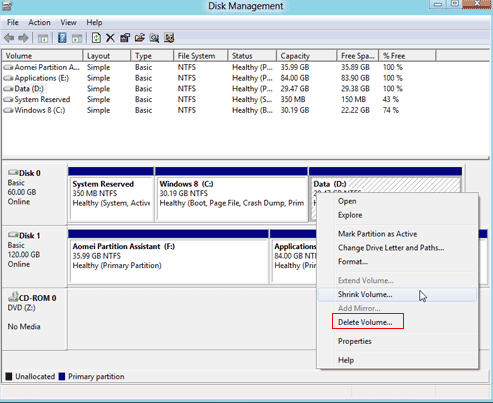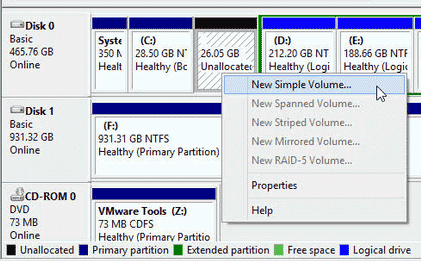How to Convert Primary Partition to Logical Partition in Windows 10
If you want to make partitions on your disk, you may resort to conversions of primary partitions to logical partitions. The process of doing so isn’t very easy and might seem complicated to some users. In this article, we’ll show you two methods you can use to convert partitions.
Why do you need to convert primary partition?
First things first. Why do we even need to convert? A primary partition is a type of partition you can make using a basic disk. Being the primary disk, it contains the OS of the computer. This type of partition is usually Drive C or D. It is also bootable. Meanwhile, a logical partition isn’t. It is created from extending a partition as opposed to a primary partition, which is created from a section of the hard disk. Conversion of primary to logical partitions is usually done if a user wants to make a new partition on the MBR disk that has maximized its 4 primary partitions.
How to Convert Primary Partition to Logical Partition Free
For whatever reason you need to convert a primary partition, we’ll provide you with the necessary steps to do so. Keep on reading to find out how to convert primary partition to logical partition for free.
Method 1: Disk Management
1. Launch Disk Management.
You can do this by pressing the Start button to open the Quick Access Menu. Here, you can find Disk Management. You can also launch Run (press Windows key + R) and type in diskmgmt.msc in the space.
2. The Disk Management window will now open.
Right-click on the partition of concern. This will show a drop-down menu. Choose Delete Volume.

3. The partition that you deleted is now unallocated space.
Right-click on it and select New Simple Volume in the drop-down menu.

4. New Partition Wizard will appear.
Choose a Logical drive as the partition. Select Next to continue.
Method2. Use a third-party software
If the above-suggested method doesn’t work, you may opt to use a third-party partition software.
1.AOMEI Partition Assistant
AOMEI Partition Assistant is one of the favorites of most tech review websites. It’s packed with many advanced features while remaining user-friendly.
2.Active Partition Manager
Active Partition Manager is a freeware that’s well-known to perform disk partition tasks. The interface is very basic, making it easy for users to manipulate. It also supports many file systems like NTFS and FAT.
Read More: How To Mark Partition as Active or Inactive in Windows 10/11
3.GParted
GParted is very popular amongst PC users when it comes to manipulating partitions. It supports many file formats including NTFS, XFS, EXT2, 3, 4, etc. It doesn’t make use of any operating system so there is no need to restart your PC to apply the changes you made.
4.Cute Partition Manager
The name of the software might fool you. Cute Partition Manager isn’t lacking power by any means. Unlike most partition softwares, Cute can run without any existing operating system as it runs on a bootable media. The process is purely keyboard-based. All you have to do is type in commands.
5.Macrorit Partition Expert
Versatility is what the Macrorit Partition Expert focuses on. It contains all the basic features you’d expect a partition software to have, plus many additional features. It also makes sure that you won’t make any mistakes because they’ve included a Commit option. It’s an additional button you have to click on before the software makes any modifications to the partition.
6.Paragon Partition Manager
The defining feature of the Paragon Partition Manager is the organized process of performing tasks. They make use of a step-by-step process to make changes in your partitions. For the average PC user, this will be very convenient and easy to use.
7.IM Magic Partition Resizer
One of the best features of IM Magic Partition Resizer is that the options are very accessible. Everything is placed on the interface strategically. This software allows you to add, delete, move, resize, rename, and copy partitions.
8.Tenorshare Partition Manager
Tenorshare has a very clean user-friendly interface. The graphics help users visualize the process. It allows you to queue tasks you want to perform first so that there would be fewer mistakes. It supports the essential partition features you may need.
You can do this on your own with just a built-in utility in your Windows PC using Disk Management. However, if you encounter some errors or just for some reason you can’t seem to get it to work, you can always rely on third-party softwares. Hopefully, one of the ten free softwares we’ve recommended above can do it for you with ease.
More Related: How To Convert Logical Drive to Primary Partition
Partition Recovery
- Partition Management
- Solve Partition Problems
- Partition Tips




 ChatGPT
ChatGPT
 Perplexity
Perplexity
 Google AI Mode
Google AI Mode
 Grok
Grok
























Theo Lucia
chief Editor